Nurturing Natural Child Learning
By Guest Blogger Sandy Harper
What is natural toddler learning? It simply means playing. Young children’s minds are sponges, taking in everything they see, hear, feel, touch and taste. Allowing them to discover on their own can help encourage independence and a natural love of learning.
Times have changed since most of us reading this were children. It seems long gone are the days where children were allowed to roam free in the neighborhood or even their own yards without constant adult supervision. Though this is now our new reality as parents, we can still nurture that childlike love of wonder and adventure but with a little bit of a watchful eye.
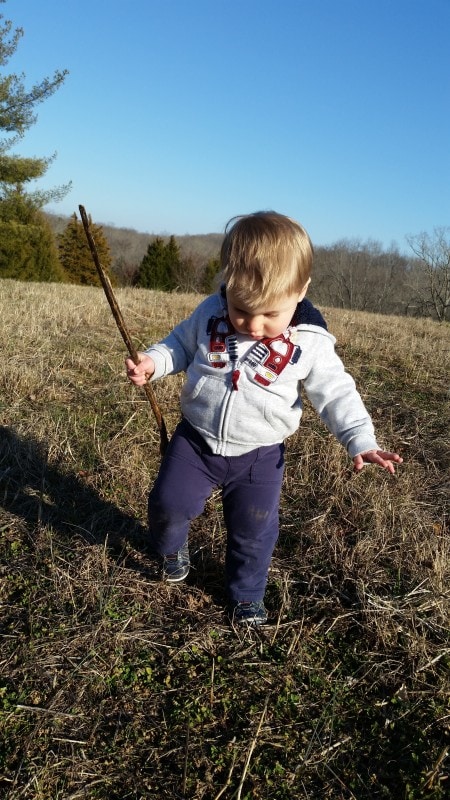 Allowing kids to play outside “on their own” can give them the opportunity to discover new things. There are many environmental concepts that are easier to comprehend if experienced rather then told about it. What better way to understand the concept of weather, seasons and temperature than being out in it. Feeling and smelling plants, watching bugs and birds and even getting hands dirty in mud and rocks can all encourage children to learn about and understand the world around them. This kind of play will also encourage wonder and imagination. They will formulate questions that when answered will possible cause new questions. Though that can sometimes be tedious, answering question after question, keep in mind the bigger picture. Your child is learning and you are one of his greatest teachers. Simultaneously, this can be used as a chance to introduce them to books on those subjects. By letting them discover and question different objects, ideas and new concepts you have the ability to help them love books because they give answers to questions they have.
Allowing kids to play outside “on their own” can give them the opportunity to discover new things. There are many environmental concepts that are easier to comprehend if experienced rather then told about it. What better way to understand the concept of weather, seasons and temperature than being out in it. Feeling and smelling plants, watching bugs and birds and even getting hands dirty in mud and rocks can all encourage children to learn about and understand the world around them. This kind of play will also encourage wonder and imagination. They will formulate questions that when answered will possible cause new questions. Though that can sometimes be tedious, answering question after question, keep in mind the bigger picture. Your child is learning and you are one of his greatest teachers. Simultaneously, this can be used as a chance to introduce them to books on those subjects. By letting them discover and question different objects, ideas and new concepts you have the ability to help them love books because they give answers to questions they have.
Playing can also strengthen a child’s imagination and natural ability to create. Some of the best types of play for encouraging imagination are building with blocks and Legos, play kitchen centers, dress-up clothes/costumes, playing with dolls, Play-Dough, paint/crayons, and trainsets where they build their own tracks. In today’s times many children have lost the ability and desire for make-believe play, since it has been created for them by television and video games. Don’t get me wrong, I think television and video games have their time and place but in moderation and at an appropriate level for the child’s age. A few years ago I was working with a young grade school student on her writing. I asked her to first just tell me an imaginary story about herself; she had no idea how to do that. How could I or anyone else expect her to write a story if she couldn’t even make one up in her mind? This truly saddened me and reinforced my need to implore to parents why something as simple as playing is so important to a child’s learning experience. Children that grow up with imaginations and creativity will become our future technology inventors, disease curers, architects, engineers, music writers and artists of all types.
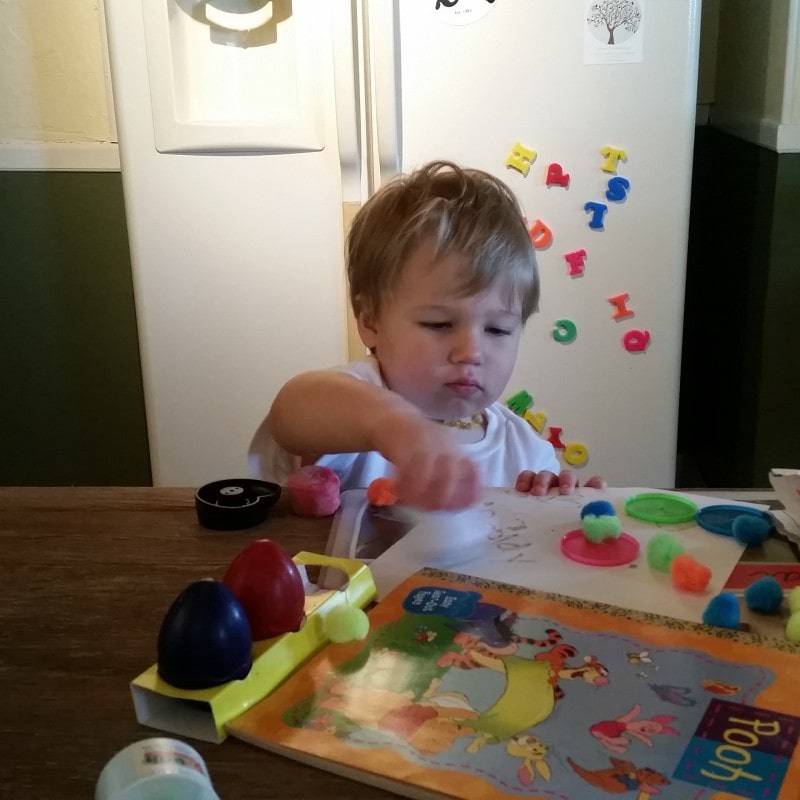 Playing can help children solve problems for themselves. Problems as simple as how a toy works, getting around an obstacle, to finding a toy they threw out of sight. If we help them with these simple difficulties how are we to expect them to deal with bigger issues as they get older. Obviously, helping them in the right direction is fine but completely doing it for them is not beneficial. Another fault as parents, we often rush our children or tell them it is okay to give up if they don’t get it right away. By doing either of those, we only hinder our children’s belief in their own abilities and ambition to keep at something until they succeed. Fostering independence and confidence in young children can help steer them in the right direction of becoming responsible, self-sufficient adults.
Playing can help children solve problems for themselves. Problems as simple as how a toy works, getting around an obstacle, to finding a toy they threw out of sight. If we help them with these simple difficulties how are we to expect them to deal with bigger issues as they get older. Obviously, helping them in the right direction is fine but completely doing it for them is not beneficial. Another fault as parents, we often rush our children or tell them it is okay to give up if they don’t get it right away. By doing either of those, we only hinder our children’s belief in their own abilities and ambition to keep at something until they succeed. Fostering independence and confidence in young children can help steer them in the right direction of becoming responsible, self-sufficient adults.
There are many ways toddlers can learn naturally, just give them a chance to play. Please share with us other play ideas that you have seen beneficial in your toddlers learning.

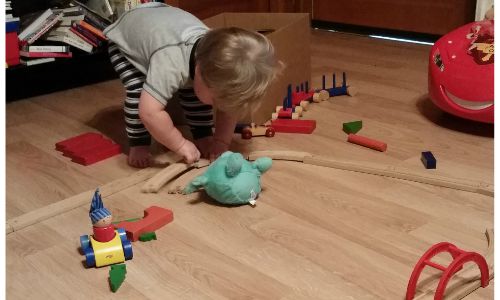

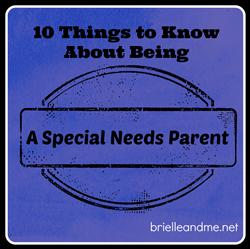
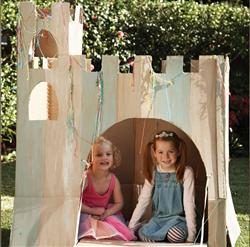
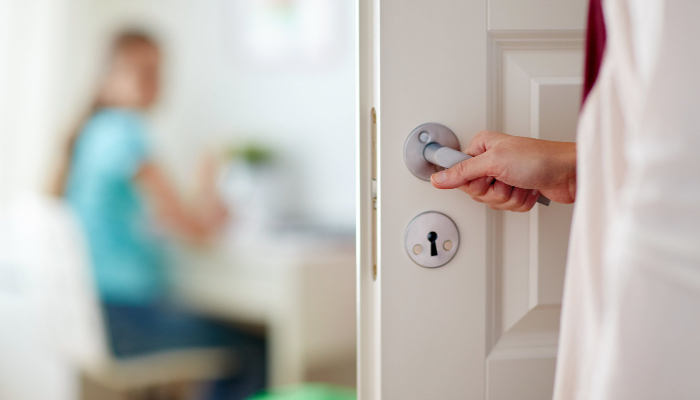
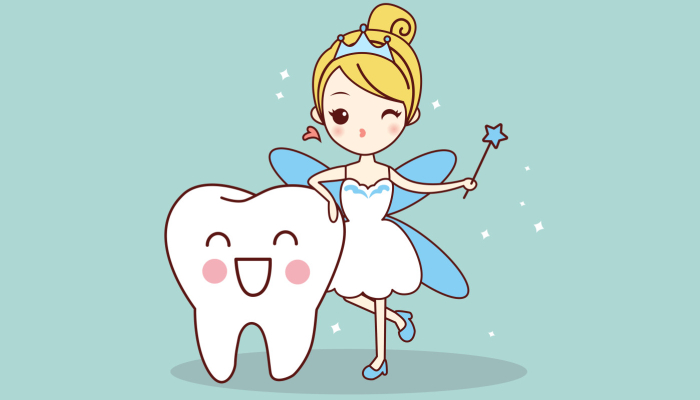
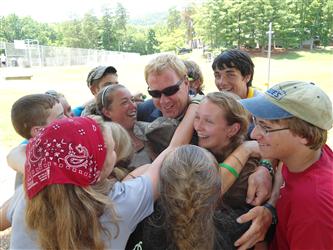
Could not agree more. Thank you for this blog!
I believe in “play and walk away” when starting to show younger children how to play. Get them started in a game or activity and play next to them for a few minutes. Then simply walk away and let them start exploring on their own. Parents who are next to them the entire time are stifling the child’s creativity and making them feel like there was a way that something has to be done. Great blog and great thoughts today